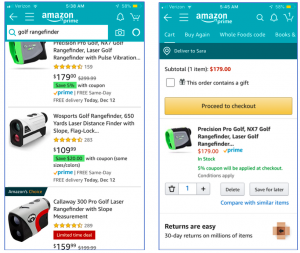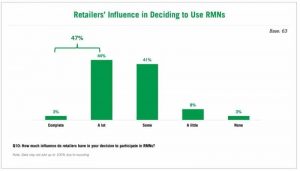
Let’s face it: interpreting your results isn’t exactly the most exciting part of marketing your business.
You like seeing people opening your emails and value the increased traffic and new business that comes from using email marketing, but you really don’t have the time to get into the nitty gritty details.
You’re not alone.
When we surveyed 1,200 small business owners and asked what obstacles keep them from using marketing data: 49 percent say they don’t know where to begin and 40 percent say they just don’t have the time.
Using reporting and analytics to your advantage doesn’t need to be a full-time job.
Getting familiar with your reports can actually help you save time, because you’ll know which marketing activities are working and which ones may not be worth your time. It will also give you the ability spot key trends, see who is responding to your messages (and who isn’t), and get inspiration for your future marketing ideas.
In this post, you’ll learn how to interpret your email marketing results and make smarter decisions in less time.
Let’s start by covering the basics:
When looking at your email reports, there are five main areas you want to focus on: open rate, click-through rate, email bounces, spam, and opt-outs.
Here are a few quick definitions:
- Open rate – the percentage of people who opened your email, compared to the total number of people you sent it to.
- Click-through rate – the percentage of clicks that links in your email receive based on the number of people who open your email.
- Bounces – signify that your email was not delivered to someone on your contact list.
- Spam – spam reports mean an individual on your email list receives your communication and then reports it as unwanted or unsolicited.
- Opt-outs – occur when someone on your email list unsubscribes from your mailings.
Now that you have a better understanding of some of the terms, let’s think about what these numbers might be telling you and how to address some of your problem areas:
What if…
My email open rate is not as high as I’d like?
Open rates let you know how many of the people who receive your emails are actually taking the next step to open and read the content you send out.
If your open rates aren’t where you’d like them to be, there are a few things you’ll want to consider:
- Frequency: Start by finding out how often your audience wants to hear from you. Once every two weeks is a good starting point, but you should experiment with the frequency to see what gets you the best response.
- Recognition: Use a familiar from name and from email address to make sure your contacts recognize that your emails are coming from you.
- Urgency: Your subject line is the first thing people see in their inbox. Make sure your subject line stands out and gives people a reason to open your email now.
A good amount of people are opening my email, but no one seems to be clicking my links?
If you’re seeing a lot of people opening your emails, you already have an audience that wants to engage with you. But if your links aren’t getting clicked, your content is not connecting with these people as well as it should. Over time, these contacts could become less engaged and less likely to open future emails.
To avoid this problem, pay close attention to what type of content is grabbing your audience’s attention. Look back at your email results for any spikes in engagement, or see if there’s anything that’s been performing especially well on your social media channels.
You also have to make it easy for people to take the next step. For a high click-through rate, focus on these three things:
- A strong call to action: It’s best to have a call to action near the top of your email so your readers don’t have to scroll too far down to get the main takeaway. You can also use buttons to make your call to actions stand out.
- Clear and concise information: Using multimedia like images and video is a great way to boost engagement and cut down on the amount of text in your email. Use these best practices for sending highly visual emails.
- Mobile friendly design: Don’t forget about your subscribers who are reading your emails from a mobile device. Make it easy for them to engage with your content on a small screen by using a single column template and avoiding tiny fonts. Preview your emails on a mobile device before sending and use a mobile friendly email template.
Here’s a chart to help you make the most of your open and click-through rate data:

What if my emails are bouncing, being marked as spam, or receiving too many opt-outs?
Bounces, spam reports, and opt-outs are something you want to keep to a minimum. Keep an eye on these numbers, and use these tips if the numbers are higher than you’d like:
- Bounces: There are a few different reasons why emails bounce, but often the problem is out of date contact information. If you have another way of reaching a contact, ask them for their updated information the next chance you get. Removing email addresses with ongoing issues will help you maintain a good email open rate.
- Spam: Permission-based email marketing is the best way to avoid spam reports. Always ask your contacts before adding them to your mailing list. Be clear about what you will be sending and how often.
- Opt-out: A few opt-outs from time-to-time are normal as your contacts’ interests change and your messages might not be as relevant as they once were.
Connecting your results with your goals
As you begin to bring reports and analytics into your strategy, focus on making a couple small changes at a time and tracking your results. Taking on too much change all at once will be overwhelming for both you and your audience.
We created a simple worksheet to help!
Identify one area of your email marketing you’d like to improve.
Use the tips we’ve outlined in this post and make sure to revisit the worksheet after your campaign goes out. What worked? What didn’t? How can you continue to improve your results?
With this worksheet, you’ll be on your way to better email marketing results and more opportunities to grow your business with email marketing.
Download and print this worksheet to easily track your results.
(275)






